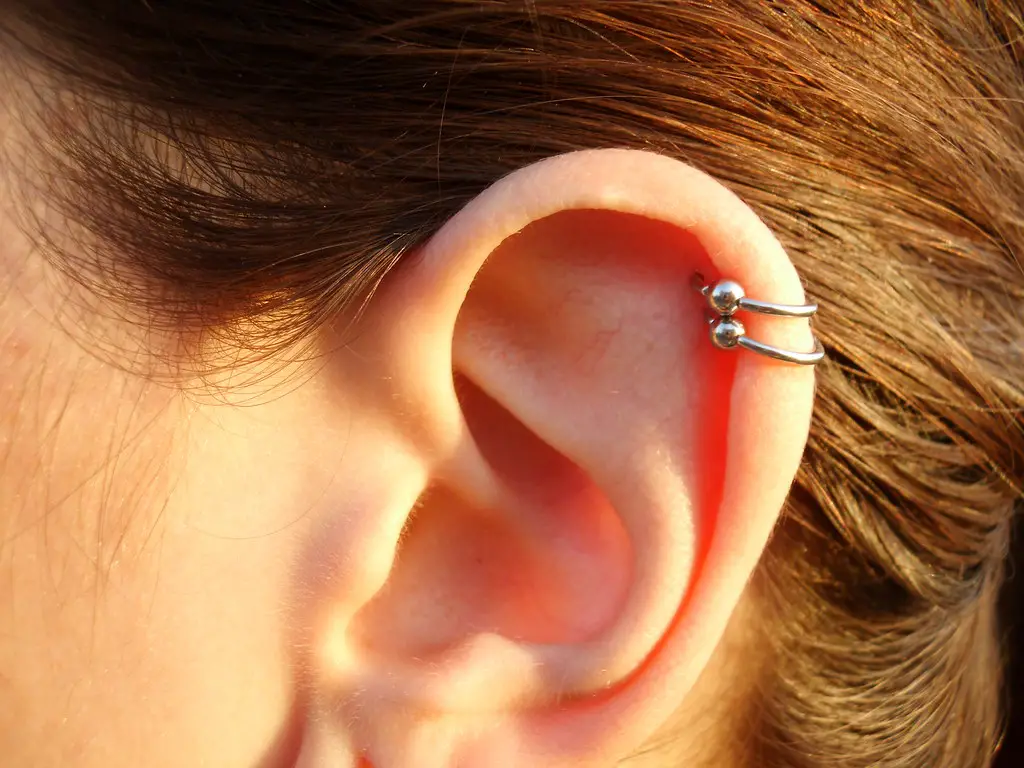When it comes to choosing earrings, especially for piercings beyond the standard lobe, the gauge (g) size becomes a crucial factor. The most common gauges for body piercings are 18g and 16g. Understanding the differences between these two can help you make an informed decision about which is right for you. This article will explore the key differences, pros and cons, and considerations when choosing between 18g and 16g earrings.
Understanding Gauge Sizes
Gauge sizes indicate the thickness of the earring post or the piercing itself. Interestingly, the gauge system works in reverse to what one might intuitively think: the higher the gauge number, the thinner the earring post.
Therefore, an 18g earring is thinner than a 16g earring.
18g (1.02 mm): Commonly used for standard lobe piercings, this gauge is slightly thinner and is a typical choice for initial piercings.
16g (1.2 mm): Slightly thicker than 18g, this gauge is often used for cartilage piercings, such as helix, tragus, and forward helix piercings.
Key Differences
Thickness:
18g: Approximately 1.02 mm in thickness.
16g: Approximately 1.2 mm in thickness.
Healing and Comfort:
18g: Generally considered more comfortable for initial piercings due to its thinner size. It often results in less trauma during the piercing process and may heal slightly faster.
16g: Though slightly thicker, many find it comfortable once the piercing is healed. It may take a bit longer to heal initially compared to 18g.
Jewelry Options:
18g: Offers a wide range of jewelry options, including studs, hoops, and dangly earrings. It’s a common gauge size, so finding jewelry is usually easy.
16g: Also provides a good selection of jewelry, particularly for body jewelry such as captive bead rings, barbells, and more intricate designs.
Durability and Support:
18g: Suitable for everyday wear and is durable enough for most activities.
16g: Slightly more robust due to its thickness, making it a better option for those who engage in more rigorous activities or who want to stretch their piercings eventually.
Pros and Cons
18g Earrings
Pros:
More comfortable for initial piercings.
Faster healing time.
Wide variety of jewelry options.
Cons:
Slightly less durable than 16g.
May not be suitable for more complex body piercings.
16g Earrings
Pros:
More durable and robust.
Suitable for a variety of piercings beyond the lobe.
Better for those considering stretching their piercings in the future.
Cons:
Slightly longer healing time.
May cause more discomfort initially compared to 18g.
Considerations When Choosing
Piercing Location: Determine where the piercing will be. For standard lobe piercings, 18g is typically sufficient.
For cartilage and other body piercings, 16g may be more appropriate.
Healing Time: If a faster healing time is a priority, 18g might be the better choice.
Future Plans: Consider if you plan to stretch your piercings in the future. Starting with a 16g can make the stretching process easier and more gradual.
Jewelry Preferences: Think about the type of jewelry you prefer. Both gauges offer a wide range, but certain styles may be more readily available in one gauge over the other.
Choosing between 18g and 16g earrings depends on several factors, including the piercing location, personal comfort, healing time, and future plans. Understanding the differences and weighing the pros and cons can help you make the best decision for your specific needs. Whether you opt for the thinner 18g or the slightly thicker 16g, both offer great options for stylish and comfortable piercings.
Tips for Transitioning Between Gauges
If you already have a piercing at one gauge and are considering transitioning to another, here are some tips:
Consult a Professional: Before making any changes, it’s advisable to consult with a professional piercer. They can provide guidance on whether your current piercing can safely accommodate a different gauge size.
Gradual Stretching: If you plan to move from an 18g to a 16g, gradual stretching is key. Use tapering tools designed for this purpose, and give your piercing ample time to adjust to each size increase to prevent damage or irritation.
Proper Aftercare: Regardless of the gauge size, proper aftercare is essential for maintaining a healthy piercing. Clean the piercing regularly with a saline solution, avoid touching it with unclean hands, and steer clear of submerging it in bodies of water until fully healed.
Common Myths and Misconceptions
Myth 1: Thicker Gauges are Always More Painful
While it’s true that thicker gauges can be slightly more uncomfortable initially, the difference in pain between 18g and 16g is generally minimal. Pain tolerance varies from person to person, and proper piercing techniques can minimize discomfort.
Myth 2: Thinner Gauges Heal Faster
Although thinner gauges like 18g can sometimes heal faster, the overall healing process is influenced more by individual aftercare practices and the body’s natural healing capabilities than by the gauge size alone.
Myth 3: You Can’t Switch Gauges
Many people believe that once a piercing is done at a certain gauge, it cannot be changed. However, with proper stretching techniques and professional guidance, it’s entirely possible to switch between gauges safely.
Popular Piercing Types and Their Recommended Gauges
Earlobe Piercings:
Recommended Gauge: 18g
Alternative Gauge: 16g for those who prefer a slightly thicker post.
Cartilage Piercings (Helix, Tragus, etc.):
Recommended Gauge: 16g
Alternative Gauge: 18g can be used, especially if the piercing is primarily decorative and not intended to be stretched.
Nostril Piercings:
Recommended Gauge: 18g or 20g
Alternative Gauge: 16g for those looking for a more substantial piece of jewelry.
Septum Piercings:
Recommended Gauge: 16g
Alternative Gauge: 18g, though less common.
Lip Piercings (Labret, Monroe, etc.):
Recommended Gauge: 16g
Alternative Gauge: 18g, particularly for initial piercings.
Choosing the right gauge for your earrings is an important decision that impacts your comfort, healing process, and overall satisfaction with your piercing. Whether you opt for the thinner 18g or the slightly thicker 16g, understanding the nuances of each can help ensure a positive piercing experience. Always prioritize professional advice and proper aftercare to maintain healthy and stylish piercings.

